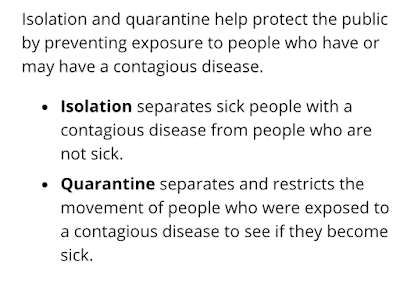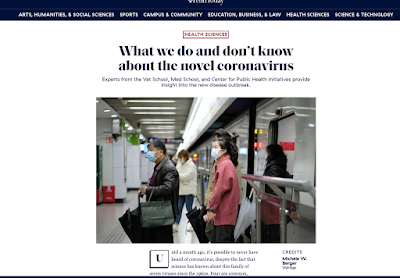–>
Novel Virus
Since every description of the “COVID-19” Coronavirus I’ve found uses the term “novel” I spent the afternoon searching for even one source easily available to the public online that explains what novel means and why it’s important for people to understand it. (This is what happens to a linguist with time on her hands).
Prepare to be underwhelmed. (But, just think of all the time I just saved you!)
From Wikipedia:
“Novel virus refers to a virus not seen before. It can be a virus that is isolated from its reservoir or isolated as the result of spread to an animal or human host where the virus had not been identified before. It can be an emergent virus, one that represents a new strain, but it can also be an extant virus not previously identified. The virus also may come up just as the results of genetic make up mutations under various causative and thus being unnoticed by human it may be lethal.”
WHO:
“Novel influenza infections are those due to influenza viruses that differ from strains currently circulating among humans. The table below
distinguishes the Asian-origin H5N1 and H7N9 viruses, which have caused fatal human cases outside of the U.S., and highly-pathogenic
avian influenza H5 and H7 viruses (U.S. strains H5N1, H5N2, H5N8, H7N8, H7N9), which are not known to infect humans.”
*But they do have a very cool video explaining the virus.
CDC
“Viruses of Special Concern
A novel influenza A virus is one that has caused human infection, but is different from current seasonal human influenza A viruses that circulate among people. Novel influenza A viruses are usually influenza A viruses that circulate among animals. Some novel influenza A viruses are believed to pose a greater pandemic threat than others and are more concerning to public health officials because they have caused serious human illness and death and also have been able to spread in a limited manner from person-to-person. Novel influenza A viruses are of extra concern because of the potential impact they could have on public health if they gain the ability to spread easily from person to person, which might cause the next influenza pandemic. Human infection with a novel influenza A virus is a nationally notifiable condition reportable to CDC. The text below summarizes the novel influenza A viruses that are currently most concerning to public health officials.”
You can skip the definition lawyers concoct:
Influenza A, novel virus means infection of a human with an influenza A virus subtype that is different from currently circulating human influenza H1 and H3 viruses. Novel subtypes include H2, H5, H7, and H9 subtypes or influenza H1 and H3 subtypes originating from a nonhuman species.
How about some local health departments?
Texas
Q: What is novel/variant influenza A virus?
A: A novel/variant influenza A virus is an influenza A virus subtype that is different from currently circulating human influenza H1 and H3 viruses. Novel subtypes include, but are not limited to H2, H5, H7 and H9 subtypes. Influenza H1 and H3 subtypes originating from a non-human species or from genetic reassortment between animal and human viruses are also novel/variant subtypes.
Minnesota
Flu viruses constantly change and mutate. Novel and variant influenza A viruses can infect and cause severe respiratory illness in humans. These influenza viruses are different from currently circulating human influenza A virus subtypes and include influenza viruses from predominantly avian and swine origin.
New York State
The 2019 novel coronavirus is a new virus and shouldn’t be confused with other coronaviruses that have been around for many years causing upper respiratory symptoms, like the common cold.
One source that comes close to explaining the significance of “novel” uses an easy to read narrative.
What we do and don’t know about the novel coronavirus:
Experts from the Vet School, Med School, and Center for Public Health Initiatives provide insight into the new disease outbreak.
“Until a month ago, it’s possible to never have heard of coronavirus, despite the fact that science has known about this family of seven viruses since the 1960s. Four are common, causing mild or moderate respiratory symptoms like a runny nose and sore throat, all of which dissipate quickly.
In the past few decades, however, several new coronaviruses have emerged, originating in animals and jumping to humans. In the early 2000s, it was severe acute respiratory syndrome (SARS), which lead to almost 800 deaths. A decade later Middle East respiratory syndrome (MERS) came about, which, according to the Centers for Disease Control and Prevention, killed approximately three out of every 10 patients with the virus.
In late December, news started to spread of a new disease originating in Wuhan, China. Since then, at the time of publication, 132 people have died from novel coronavirus (2019-nCoV). China has confirmed 6,061 cases, with many more in other countries. The United States has so far identified five. “
Effective Communication
RULE #2
Explain Terms
(especially when they’re central to your message)


















